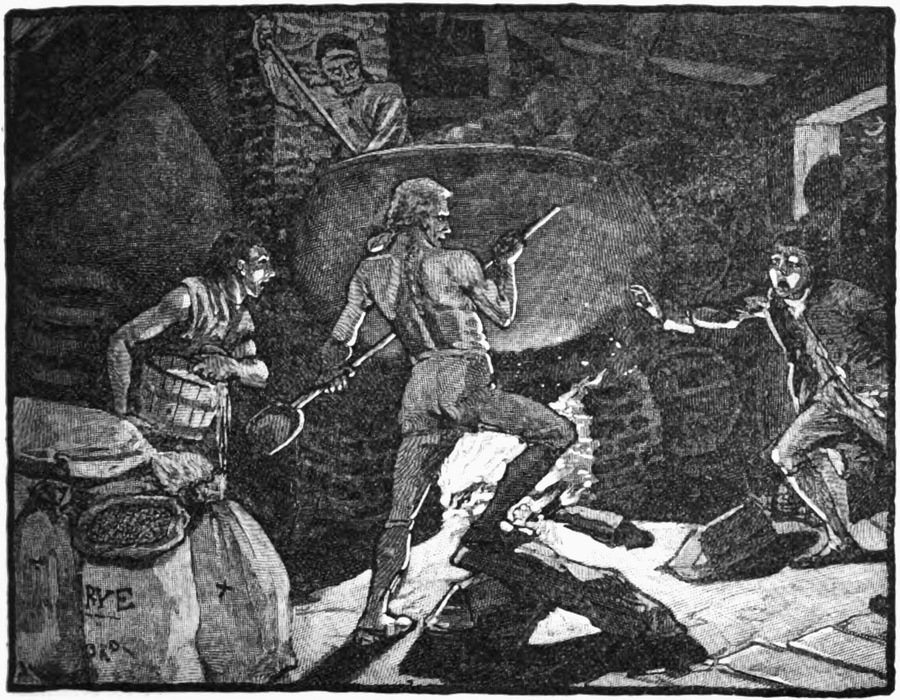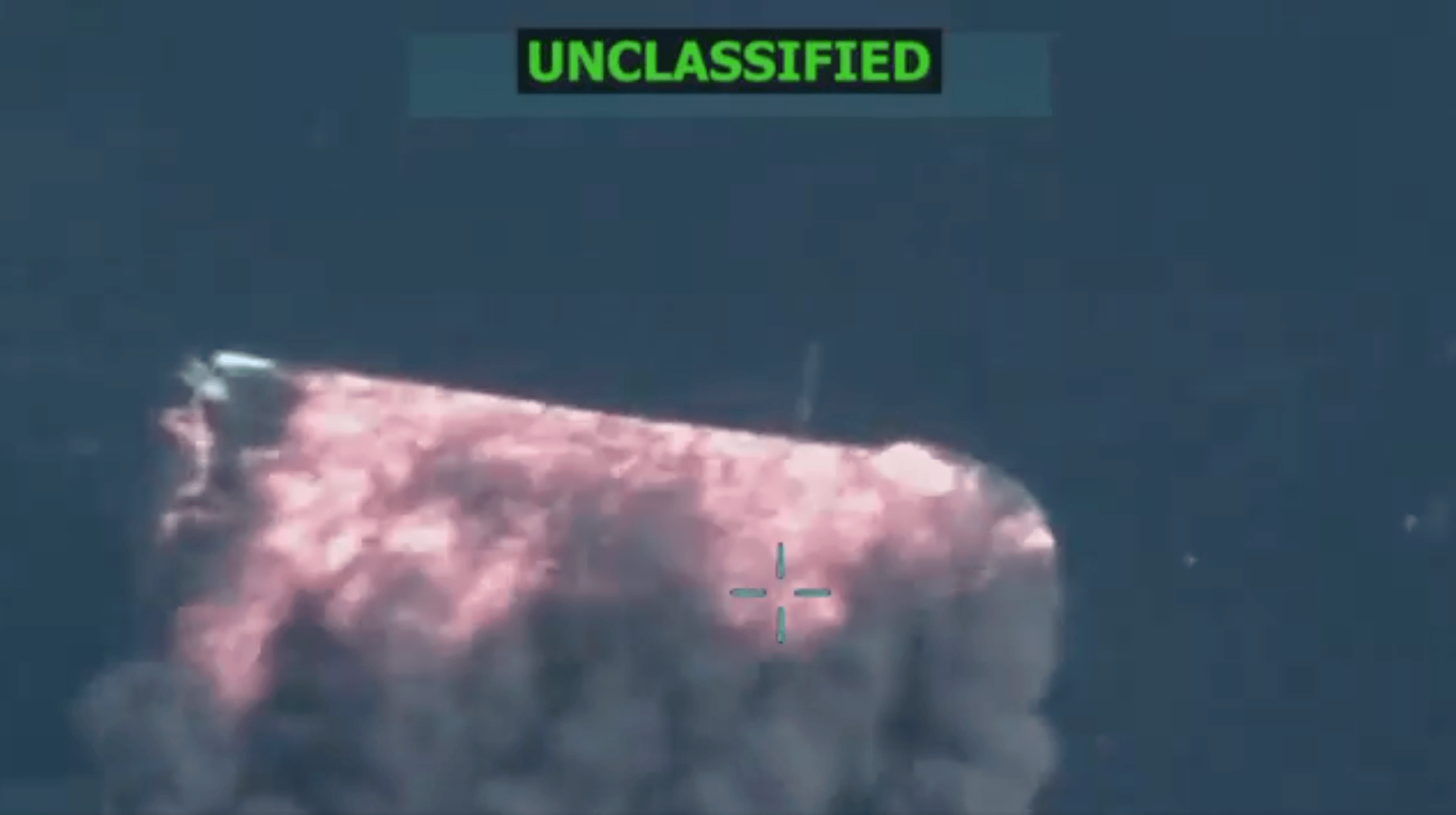A Primer on the Silent Witness Rule and United States v Trump
.jpeg?sfvrsn=bd5deae5_5)
Published by The Lawfare Institute
in Cooperation With

If you have not yet heard the term “the silent witness rule,” you soon will. It’s almost certain to play a crucial role in United States v. Trump, Special Counsel Jack Smith’s case against the former president for allegedly, among other things, willfully retaining 31 documents containing sensitive national defense information. Twenty-one of those documents were allegedly classified at the Top Secret level.
The silent witness rule is a practical, court-fashioned approach to prosecuting cases involving national security secrets. It attempts to protect the rights of the accused while also shielding classified information from public dissemination. Basically, it’s a procedure in which a classified document is provided to the jury and other trial participants in its entirety, but witnesses refer to it in open court only in generalities and by using code words, like “Country A” or “Foreign Leader Y.” That way the trial remains open to the public but sensitive national defense information is not compromised.
Last week, two days before the Trump indictment was unsealed, I spoke to Brian Greer, who was an attorney in the general counsel’s office of the Central Intelligence Agency from 201018. I asked him if he expected the Special Counsel’s office to try to use the silent witness rule if Trump was indicted. At that point Greer was wary about that prospect.
“If this were a normal case, that’s what they’d do,” he said. “But it’s not a normal case. Inside the CIA, [the rule is] considered a totally common thing. A no-brainer. But there’s not a lot of case law other than Mallory.”
Greer was referring to United States v. Mallory, a ruling of the U.S. Court of Appeals for the Fourth Circuit. That decision, which only came down last July, is the only federal appellate case approving the controversial procedure, even though district courts have been using it for more than 35 years. (For a recent interview of Greer about the silent witness rule and other CIPA issues implicated by the Trump prosecution, listen to this episode of the Lawfare Podcast.)
For reasons that will soon become apparent, the silent witness rule is controversial. It brushes up against the defendant’s Sixth Amendment right to a public trial; the public’s First Amendment right to an open trial, and the defendant’s right to present a full and vigorous defense, which stems from the defendant’s Fifth Amendment right to due process and Sixth Amendment right to confront the witnesses against him.
Given the rule’s likely centrality to the Trump prosecution and the paucity of precedents endorsing it, this article is apt to be disconcerting and even worrisome for many readers. In fairness, the Fourth Circuit’s Mallory decision provides a strong affirmation of the rule, and should be entitled to considerable weight by all federal courts. The Fourth Circuit has developed national security expertise because it hears appeals from the Eastern District of Virginia, where a great many members of the intelligence community live and work. Both the CIA and the Pentagon are based there.
Still, the special counsel’s office is prosecuting Trump in the Southern District of Florida. The assigned judge, U.S. District Judge Aileen M. Cannon, will not be bound by Mallory, nor will the conservative judges of the Eleventh Circuit, who will hear any appeals from Cannon’s rulings. Needless to say, the United States Supreme Court, which might also review rulings in this manifestly monumental case, is another wild card.
More concerning still, Mallory does not necessarily represent a greenlight for all uses of the silent witness rule—even in the Fourth Circuit. The question is not whether one can ever use the rule; it’s whether one can use it under the unique set of circumstances presented by any particular case. As I’ll show, United States v. Trump could present a set of circumstances that would fall toward the dicier end of the spectrum
Option I: Declassify Documents
Before diving into the rule, let me briefly orient readers. There are basically three ways the government can prosecute a case involving classified documents in a public trial. The most straight-forward approach is for the government simply to declassify the documents in question. But while it’s conceivable that the intelligence community might declassify one or two of the documents charged in the Trump indictment, it’s quite unlikely that it would declassify all 31—including 21 at the Top Secret level.
Option II: Use CIPA Section 6
A second way of using classified documents in a public trial is to follow the express procedures laid out in the Classified Information Procedures Act of 1980. (See here for a CIPA primer.) Under Section 6 of that law, the government can ask for a pretrial hearing—closed to the public—at which it proposes to the judge certain “substitutions” for the classified documents it wants to introduce or “redactions” to those documents. These are supposed to protect national security yet, at the same time, maintain the defendant’s essential right to present a zealous defense. A substitution might be a summary of a classified document that provides the jury, in general terms, the key information it needs to know to decide the contested issues in the trial. In the case of redaction, a copy of the actual document would be given to the jury, but with the most sensitive information obscured. (To participate in these closed pretrial hearings, at least one of Trump’s counsel would need a security clearance.)
Importantly, Section 6 procedures are not just applicable to documents the government wants to introduce. They can also be applied to documents the defense wants to show the jury. A common circumstance, for instance—and one likely to arise in the Trump prosecution—is that the defense asks permission to show the jury non-classified, “open-source” materials that demonstrate, in the defense’s view, that the key purportedly sensitive information contained in the government’s classified documents was actually publicly available. The defendant then argues that since the information was not “closely held,” it cannot qualify as “national defense information” protected under the Espionage Act.
Odd though it may seem, in these situations the government often seeks to use Section 6 substitutions or redactions to curb open discussion in court of these publicly available documents. The government does so to prevent courtroom spectators—particularly the media—from “connect[ing] the dots” and thereby inferring the content of the allegedly sensitive information in the government’s classified documents. The key Fourth Circuit precedent mentioned above, Mallory, actually involves information of this kind—publicly available documents the defendant wanted to introduce but the government wanted to partially shield from view.
If the judge rejects the Section 6 substitutions and redactions the government proposes, or the government thinks those tools are inadequate for the occasion, the government can propose a third way to introduce the document: Using the silent witness rule.
Option III: Silent Witness Rule
The crux of the silent witness rule was described as follows in United States v. Zettl, a 1987 interlocutory appeal to the Fourth Circuit from an Eastern District of Virginia case:
Under such a rule, the witness would not disclose the information from the classified document in open court. Instead, the witness would have a copy of the classified document before him. The court, counsel and the jury would also have copies of the classified document. The witness would refer to specific places in the document in response to questioning. The jury would then refer to the particular part of the document as the witness answered. By this method, the classified information would not be made public at trial but the defense would be able to present that classified information to the jury.
(Because of the procedural posture of Zettl, the Fourth Circuit did not end up opining on the rule’s propriety at that time.)
Some commenters see the silent witness rule as a natural outgrowth of the remedies that CIPA Section 6 explicitly affords, or even as a species of Section 6 remedy. There is a crucial distinction, though. With Section 6 substitutions or redactions, the public sees exactly the same trial that the jury sees. With the silent witness rule, however, the public sees only some fraction of the trial the jury sees. That situation draws into question whether the defendant is truly receiving a “public trial.”
There are rare situations where it is permissible to close a portion of a trial. The U.S. Supreme Court has held that while there is a “presumption” in favor of public trials, the right is not absolute. “[T]he right to an open trial may give way in certain cases to other rights or interests, such as the defendant’s right to a fair trial or the government’s interest in inhibiting disclosure of sensitive information.”
In Mallory, the Fourth Circuit found that a judge could approve the use of the silent witness rule so long as three conditions were met. These conditions—the ones in quotation marks below—were lifted from language the Supreme Court had used to define when it was permissible to close a courtroom:
“[1] the party seeking to close the hearing [has] advance[d] an overriding interest that is likely to be prejudiced [and] [2] the closure [would] be no broader than necessary to protect that interest,” and it must “[3] consider reasonable alternatives to closing the proceeding.”
Although the Mallory court found that this rigorous standard was met, it also expressed doubt whether that high standard was really required:
[W]e question ... whether the application of the silent witness rule in this case even implicated the Sixth Amendment right to a public trial. No member of the public was actually excluded from the courtroom at any point during the trial, and thus there was no literal closure of the courtroom. This fact sets this case markedly apart from every decision finding a violation of the constitutional right to a public trial that Mallory has identified or that we have found.
Despite the Fourth Circuit’s strong endorsement of the silent witness rule, it’s important to remember the specifics of the Mallory case, and how they might differ from the Trump prosecution. Mallory was charged with conspiring to transmit, and transmitting, sensitive national defense information in violation of the Espionage Act. Mallory had not objected to the government’s use of the silent witness rule vis-à-vis the classified documents being introduced by the government—i.e., the core of the prosecution case in chief. As noted above, the defense only challenged the rule’s use with respect to 17 publicly available documents that the defense presented during its case. As a consequence, during the nine-day trial only 25 pages of transcript—“about one-half an hour’s time”—were conducted under the restrictions imposed by the silent witness rule.
In contrast, the special counsel’s indictment charges Trump with willfully retaining 31 highly sensitive documents. If the government does not whittle down that number through either declassification or Section 6 substitutions or redactions, a very substantial percentage of the Trump trial might have to be conducted under conditions in which the public will receive less information than the jury. (Such conditions will likely not only be challenged by press organizations, but also stridently denounced by Trump and his surrogates as recreating the abuses of the English Court of Star Chamber and various other outrages throughout history.)
The percentage of a case that is conducted under the silent witness rule procedures appears to be relevant to whether those procedures pass constitutional muster. Let’s look closely, for instance, at perhaps the first published case in which a federal district judge approved the use of the silent witness rule. In November 1987, U.S. District Judge T.S. Ellis III of the Eastern District of Virginia permitted the procedure to be used in an Espionage Act prosecution known as United States v. Rosen. (See discussions here and here.) But the specific plan of action Ellis approved was extremely modest. It called for applying the silent witness rule to a mere four minutes and six seconds (4:06) of a single tape recording. (See footnote 20 of the ruling.)
Importantly, this had not been the government’s first proposal in the Rosen case. Earlier, the government had asked Ellis to approve a much more wholesale use of the rule. At that point, the government wanted to use it to present 18 minutes and 24 seconds of tape recorded conversations as well as “all classified documents in both the government’s case and the defense case"—36 documents in all. (See footnote 20 of the November 1987 ruling.) In April 1987, Ellis rejected that original proposal in scathing language: “What the public [would] not see or hear is the heart of the case, namely the classified material the government claims is the [national defense information] that the defendants allegedly received and distributed without authorization.” Ellis found that the government’s plan would have been “clearly equivalent to sealing essential aspects of the trial” in violation of the defendant’s Sixth Amendment right to a public trial and the public’s First Amendment right to an open trial.
The extensive use of the silent witness rule contemplated by the government’s original proposal in Rosen also struck Ellis as interfering with the defendant’s right to a zealous defense. His concerns related to the nitty-gritty of the proposed “coding” process in that case:
[T]he government proposes that the witness would not speak the names of certain specific countries, foreign persons, etc., but would instead use a code (e.g. "Country A," "Report X," "Foreign Person Y," "Foreign Person Z," etc.) provided also to counsel, the Court, and the jury. Moreover, this code would change with respect to different alleged overt acts, presumably to prevent the public from inferring the meaning of the generic designations or otherwise breaking the code.
The more documents the silent witness rule was applied to, the more potential there was for jury confusion, Ellis found. In addition, he was dubious of defense counsel’s ability to zealously argue his or her client’s case when hamstrung by these codes.
[T]he silent witness rule, applied across the board as the government proposes here, essentially robs defendants of the chance to make vivid and drive home to the jury their view that the alleged [national defense information] is no such thing, as essentially similar material was abundant in the public domain.
In the end, the government was able to placate Judge Ellis, mainly, it appears, by greatly limiting its use of the rule. Unfortunately, the precise details of the government’s revised plan in Rosen—including whatever additional adjustments the government might have made to allay Ellis’s qualms—are not available, because Ellis laid them out in a separate non-public order that remains sealed.
What’s worrisome today is that it’s hard to imagine a version of the upcoming Trump prosecution that would not more closely resemble the situation that confronted Ellis in April 1987, when he lambasted use of the procedure, than the one that confronted him that November, when he finally gave it the thumb’s up.
Perhaps the broad language of the Fourth Circuit’s Mallory ruling of last July should be read as superseding both of Ellis’s rulings, approving use of the rule more broadly than Ellis would have tolerated. But that’s not how I read it.
What no one can doubt is that Mallory is not binding on either Judge Cannon or on the Eleventh Circuit judges who will, in the first instance, review her rulings. They are free to follow any arguments they find persuasive—and some of Judge Ellis’s concerns carry force. If the government is unhappy with Judge Cannon’s rulings with respect to its proposed use of the silent witness rule, it can appeal as of right under the CIPA. But, of course, that would delay the trial, which could have its own dire repercussions for the prosecution.
As the Trump case proceeds, Special Counsel Smith will be walking a tight-rope. He will likely have to fashion a silent witness rule proposal that will protect national security secrets, facilitate Trump’s prosecution, protect Trump’s constitutional rights, and avoid triggering an adverse precedent that could throw a wrench not only in this case, but in all future Espionage Act prosecutions.


.jpg?sfvrsn=8253205e_5)


